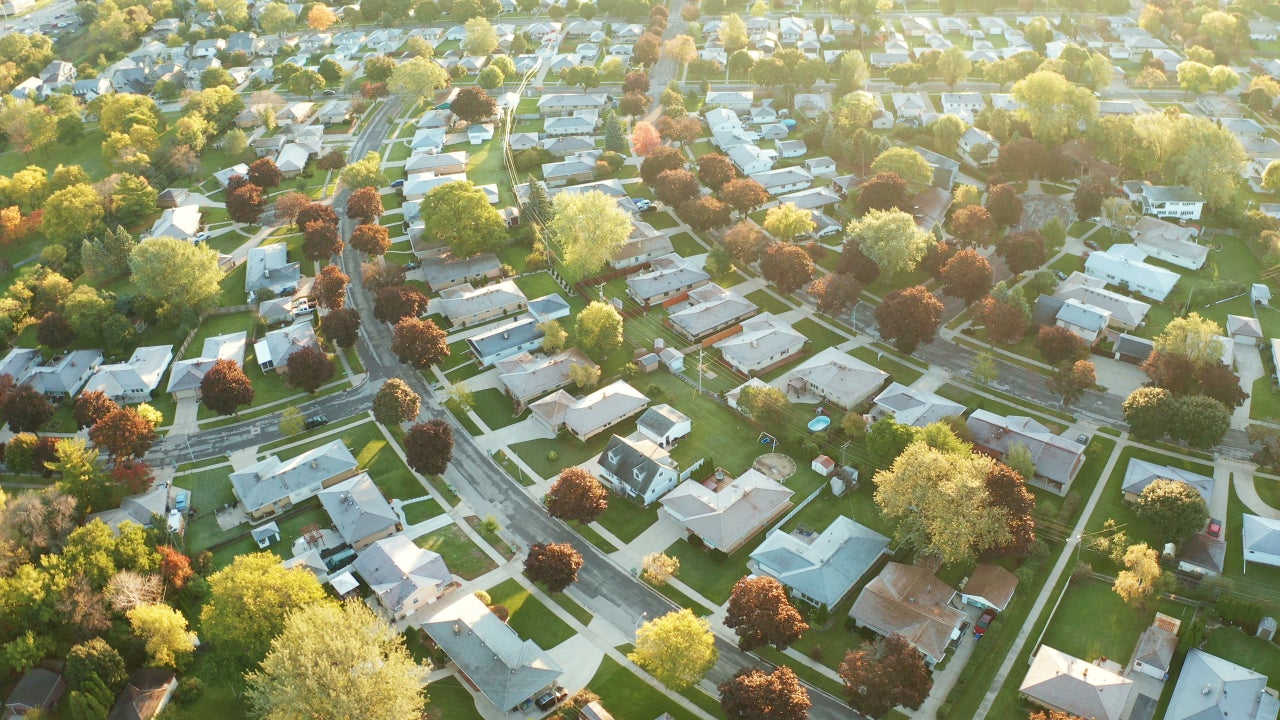What does an interior designer do?

Our writers and editors used an in-house natural language generation platform to assist with portions of this article, allowing them to focus on adding information that is uniquely helpful. The article was reviewed, fact-checked and edited by our editorial staff prior to publication.
Key takeaways
- Interior designers are trained professionals who create harmonious, functional spaces indoors.
- Interior designers must have a minimum of an associate's degree in design and be licensed in most states.
- Interior designers typically charge an hourly/monthly rate, a flat rate or a percentage based on the total cost of a project.
- Interior designers collaborate with architects, builders and contractors to ensure the design meets the client's objectives and complies with building codes and safety standards.
Pulling a room (or an entire home) together takes energy and talent. After all, there are many decisions to be made about layout, color, finishes, size, scale and focal points. Not everyone is cut out to make such decisions. Frankly, it can be overwhelming.
Luckily, interior designers are trained to transform spaces, achieving in technical terms the ambiance the inhabitants want. They literally create the feeling and features an individual is looking for but doesn’t know how to accomplish.
Let’s look at what interior designers do, how much they cost and how they can work with you.
What is an interior designer?
An interior designer is a professional trained in creating a harmonious, functional space with a building, in contrast to architects, who focus on its exterior. Interior designers often specialize in a certain field, such as residential (homes), commercial (businesses) or hospitality (hotels). Within the residential field, some specialize even further, in kitchens and bathrooms, for example, or in home modifications for seniors, which are increasingly popular as the population ages.
What are the specific tasks and responsibilities of an interior designer?
An interior designer’s main role is to enhance the appearance, functionality and safety of indoor spaces. Taking into account the needs and preferences of the inhabitants, they consider factors ranging from the placement of an interior wall to the concealment of cables, from the height of a doorway to the flow of the rooms.
Interior designers are responsible for creating a design plan and providing detailed instructions to the contractors and builders who actually do the construction, ensuring that projects are completed according to the agreed-upon schedule and budget.
Working with an interior designer
The typical process starts with a meeting. Most designers will present their portfolios so you can view photos of previous projects. The portfolio should give you a good idea of their style and attention to detail. If you like what you see, you can move on to discuss your goals, budget and needs.
After touring your home or the site where your new home will be, the designer can then use your preferences to sketch out what the final product might look like. Or, they might create boards (literal, physical ones or 3D computer renderings) featuring many of the most important elements, such as colors and themes; materials and fabric samples; lighting; floor, ceiling and wall finishes; and fixtures. They will typically propose a budget and a contract detailing their services.
Once you approve the design plan, the interior designer will source the items needed for the space, such as furniture and accessories. In some cases, an interior designer may take you shopping to help choose the items and/or serve as a project manager, overseeing the work of contractors.
How do you become an interior designer?
Interior designers must earn a minimum of an associate’s degree from an accredited school, but many earn a bachelor’s degree (BFA or BS) in interior design, or even architecture. Some of the courses required may include drawing, lighting design, architecture, environmental science, professional practice and computer drafting. Some of the more prestigious institutions, such as the New York School of Interior Design, Savannah College of Art and Design and Rhode Island School of Design, offer specialized degrees and a liberal arts education as well.
Interior designers must be able to draw, read and edit blueprints, according to the Bureau of Labor Statistics’ definition of the profession. They also must be well-versed in national and local building codes, inspection regulations and accessibility standards.
Because they deal with construction, electrical wiring and plumbing, interior designers have to be state-sanctioned, and each state has its own licensing or certification requirements. Most states that require credentials will mandate that designers pass the National Council for Interior Design Qualification (NCIDQ) exam.
Besides NCIDQ certification, reputable interior designers often have other credentials. Look for these initials after their names:
- American Lighting Specialist (ALA)
- Council for Interior Design Accreditation (CIDA)
- Interior Design Continuing Education Council (IDCEC)
How do interior designers charge?
Interior designers typically charge for their services in one of three ways (figures courtesy of HomeGuide):
- Hourly or monthly. Rates typically range from $50 to $200 per hour, but can go as high as $500.
- Flat rate by project, depending on the scale of the job. Typical range: $200 to $2,000, though it could go as high as $12,000.
- A percentage based on the total cost of construction, items and services purchased, anywhere between 10 and 40 percent.
What’s the difference between an interior designer and an interior decorator?
Obviously, there’s overlap between the two professions. Interior designers do offer decorating services, and many interior decorators style themselves, rather confusingly, as designers.
The main difference: An interior designer typically has more formal education and training than a decorator. Decorating is just one aspect of a design project — interior designers are capable of furnishing a room but also of envisioning and creating (theoretically, at least) its internal structure and bones. In contrast, a decorator is not certified to design a space. They deal with furnishing it, but not with any fundamental changes. They could suggest structural alterations but are not qualified to carry any out.
For example, a decorator could help you refresh your bathroom — replace fixtures, redo the walls or floor, add new accessories. A designer would be called for if you wanted to dramatically enlarge the bathroom, add a separate shower or re-arrange the placement of the tub, toilet or sink.
If all you need is some help choosing a few accents or pieces of furniture, or coming up with a color theme, an interior decorator will work. But if the project is larger and includes a major renovation (or new build), space planning, coordinating with an architect and contractors, a certified interior designer is the best option.
How to choose an interior designer
When choosing an interior designer, ask for referrals from past clients. Check the designer’s training and certification, as well as pictures of rooms and projects they have completed in the past.
Find out how the designer charges: hourly rate, percentage of the overall job or some sort of combination of the two. Are there flat rates for certain types of projects (especially good if you’re on a tight budget) ? Also ask if they bill on products or materials they purchase, or if you pay directly for them.
And get everything down in writing, to avoid misunderstandings: a detailed description of what their services will entail.
Communication is key when working with an interior designer, especially when you get down to planning the project. Choose a designer that takes your preferences into account and understands what you are looking for. Remember that at the end of the day, you have to live with the final product. If you feel uncomfortable voicing your opinion or pressured into a design that does not fit your budget or style, you will likely be better off with a different designer.
How can an interior designer enhance the value of a property?
Interior designers often can help identify which improvements will have the greatest impact on a property’s value when it comes time to sell. Conversely, they can often save homeowners from incurring unnecessary expenses with improvements that will not add value to the home.
An interior designer can enhance a home improvement project by taking the guesswork out of it for a homeowner and making the process more efficient. When a contractor is hired, the designer will have already created precise drawings and elevations to guide them and will have provided estimates for the types and quantities of materials. This avoids potential problems, such as incorrectly positioned electrical or plumbing features — costly and time-consuming issues to fix — or a shortfall in supplies. The fewer overruns or delays, the better a return on investment a remodel offers.
Bottom line: When do you need an interior designer?
If you need help pulling a room together, coordinating different rooms or choosing the right finishes for your home, an interior designer is ideal. If you are working with an awkward space and you are having trouble envisioning the best layout or your home’s flow, an interior designer may have fresh space-planning ideas that work. Plus, they can help you avoid the costly mistake of making the wrong choice in flooring, paint color or furniture.
Interior designers can advise on where to spend and where to save. In addition, they understand design styles well enough to ensure your space will withstand the test of time.
Working with an interior designer comes at a price, but it may be well worth it. The designer is there to guide you in making the choices needed to create the most functional, aesthetically pleasing room or home possible. Always remember, though: It’s your dream. They just make it a reality.
You may also like

What income do I need to afford a $900K house?

‘We buy houses’ companies in Illinois

What is a Realtor, and do I need one?

How much does a home appraisal cost?


